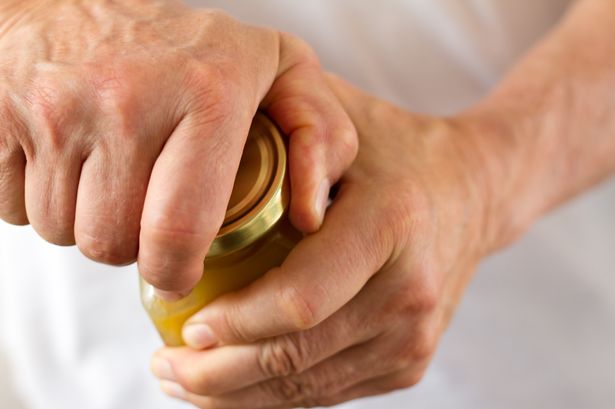Science
Cambridge Professor Shares Smart Trick to Open Tight Jar Lids

Professor Hannah Fry from Cambridge University has unveiled an unexpected technique for opening stubborn jar lids that requires no physical strength. In a recent TikTok video, she explains how a simple breathing method can help anyone tackle the frustration of tightly sealed jars.
Fry begins her demonstration by highlighting the common struggle many face when trying to open jars, stating, “You know when you can’t open a jar? There is actually a scientifically legitimate trick here that means you will never have to struggle again.” She emphasizes that it is more about “brains over brawn” and “breath over biceps.”
The Breathing Technique Explained
In her video, Fry instructs viewers to “forcibly breathe out” while twisting the lid. She elaborates on the science behind this approach, explaining that the human arm is not as stable as one might think. “Your arm is this floppy little noodle that’s lolling around all over the place,” she says. This inherent instability means that the energy required to stabilize the arm is also needed to open the lid.
To counteract this, Fry recommends taking a deep breath and holding it. By filling the lungs with air, individuals can increase pressure in their internal cavity, effectively turning their torso into a “really stiff cylinder” that provides a stable base for lifting. This technique is commonly utilized by weightlifters, who instinctively use it during strenuous activities.
Fry goes on to explain that when opening a jar, a twisting motion is created that must be countered by the shoulder and spine. The muscles engaged during a forced exhale, specifically the internal obliques and transverse abdominis, play a crucial role in stabilizing the body for this task. “When you make this forced exhale, you are priming your body and locking your base of support,” she notes, allowing all energy to focus on the jar.
Real-World Applications and Community Feedback
The response to Fry’s technique has been overwhelmingly positive. Users on TikTok have shared their experiences, with one individual stating, “I always do the breathe out method and it really works. Now I know the reason that’s cool.” Another user commented on the broader implications of the technique, mentioning that it is also related to the use of lifting belts for stability.
Several TikTok users have connected Fry’s method to the term Valsalva breathing, which is often employed in weightlifting. This technique involves bracing against a lifting belt for additional support and is a key reason why some lifters experience dizziness after heavy lifts due to breath-holding. Another noted that the same principle applies in sports like tennis, where players are taught to exhale during their shots for better performance.
With Fry’s innovative approach, those struggling with jar lids may find newfound confidence. The combination of scientific reasoning and practical application makes this method an intriguing solution to a common household annoyance. Why not try it out yourself and see if you can open that stubborn jar lid with ease? If you do, feel free to share your experience in the comments section.
-

 Entertainment3 months ago
Entertainment3 months agoAnn Ming Reflects on ITV’s ‘I Fought the Law’ Drama
-

 Entertainment4 months ago
Entertainment4 months agoKate Garraway Sells £2 Million Home Amid Financial Struggles
-

 Health3 months ago
Health3 months agoKatie Price Faces New Health Concerns After Cancer Symptoms Resurface
-

 Entertainment3 months ago
Entertainment3 months agoCoronation Street’s Carl Webster Faces Trouble with New Affairs
-

 Entertainment3 months ago
Entertainment3 months agoWhere is Tinder Swindler Simon Leviev? Latest Updates Revealed
-

 Entertainment4 months ago
Entertainment4 months agoMarkiplier Addresses AI Controversy During Livestream Response
-

 Science1 month ago
Science1 month agoBrian Cox Addresses Claims of Alien Probe in 3I/ATLAS Discovery
-

 World2 weeks ago
World2 weeks agoBailey Announces Heartbreaking Split from Rebecca After Reunion
-

 Health4 months ago
Health4 months agoCarol Vorderman Reflects on Health Scare and Family Support
-

 Entertainment4 months ago
Entertainment4 months agoKim Cattrall Posts Cryptic Message After HBO’s Sequel Cancellation
-

 Entertainment3 months ago
Entertainment3 months agoOlivia Attwood Opens Up About Fallout with Former Best Friend
-

 Entertainment2 weeks ago
Entertainment2 weeks agoCoronation Street Fans React as Todd Faces Heartbreaking Choice





















